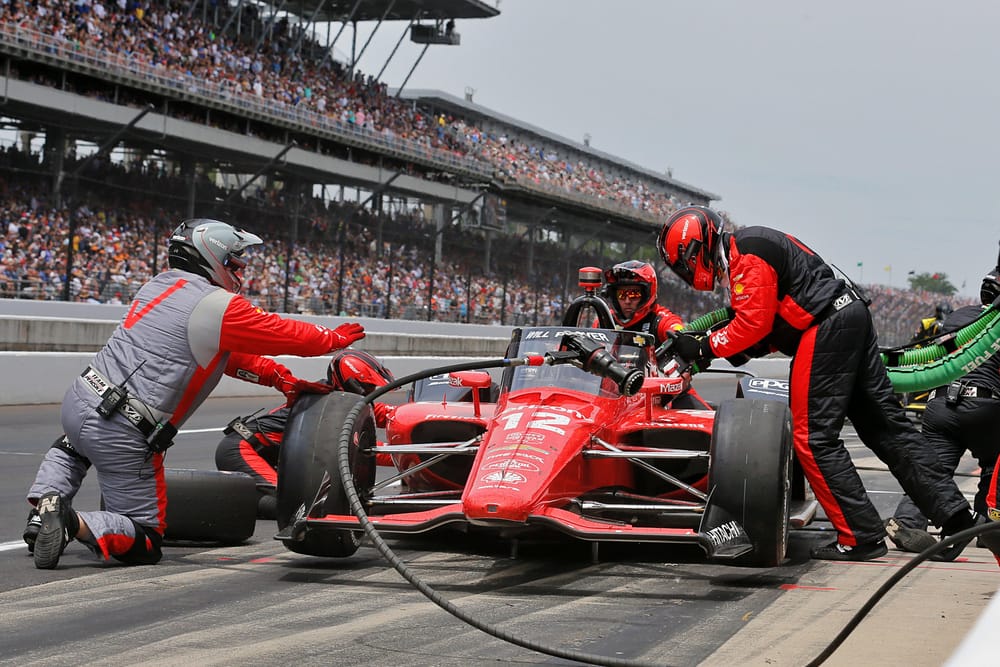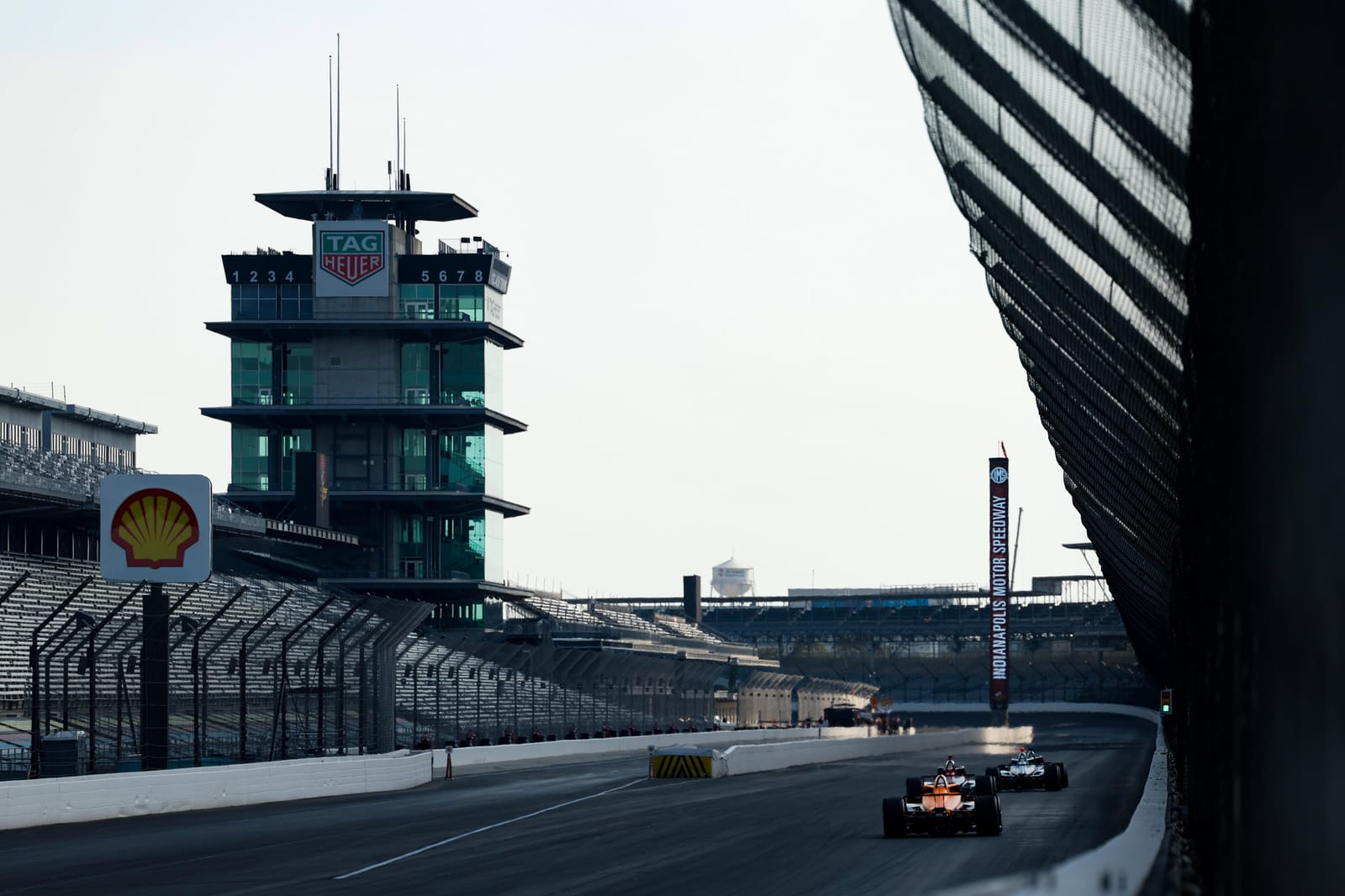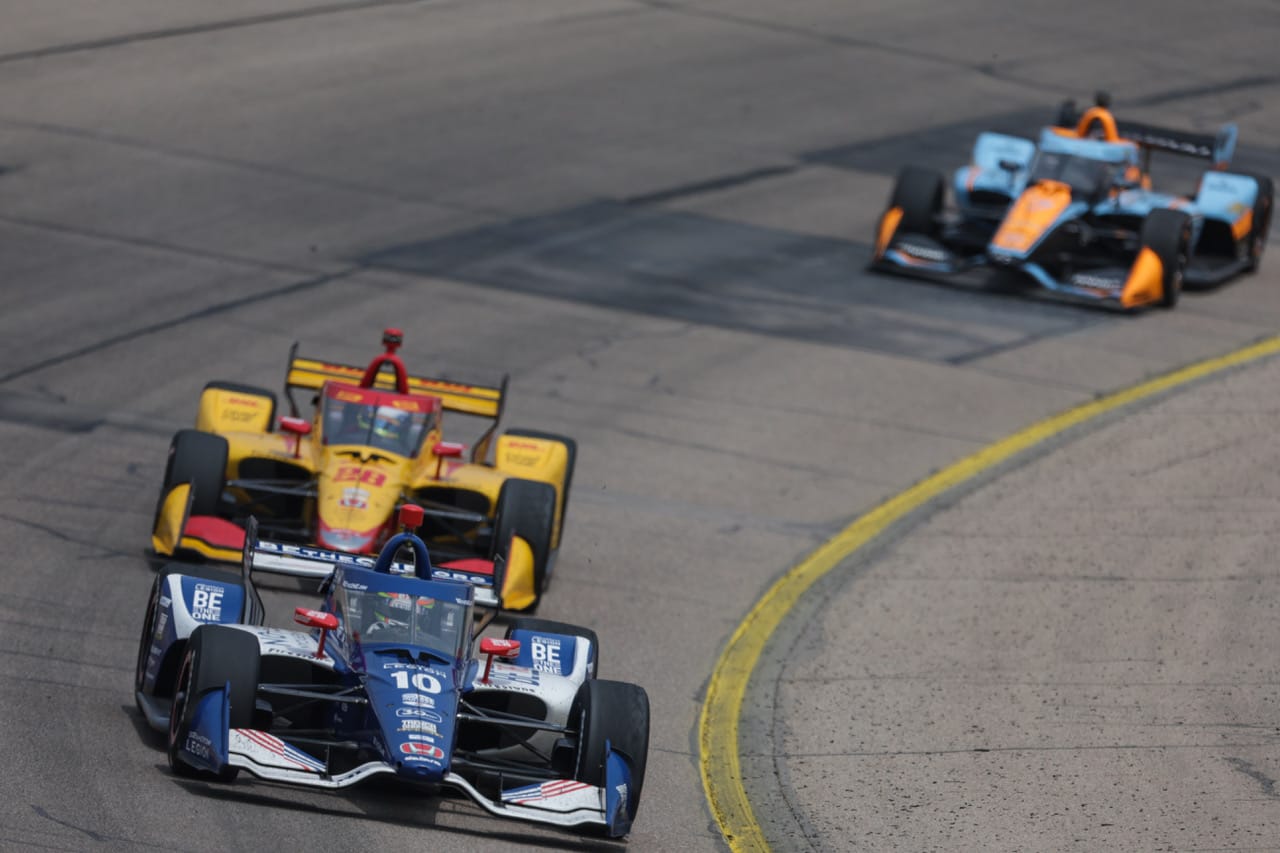It’s no secret that IndyCar is one of the most competitive championships in elite motorsport week to week, even if Alex Palou did his utmost to change that perception in 2023.
Because of IndyCar's familiar pace parity, individual races are so often down to how strategy is nailed or bungled in key moments.
You can pit earlier than the opposition to try an undercut, or stay out longer to position yourself better later in the race. But the one constant that has to be right with any strategy in IndyCar is the pitstop itself.
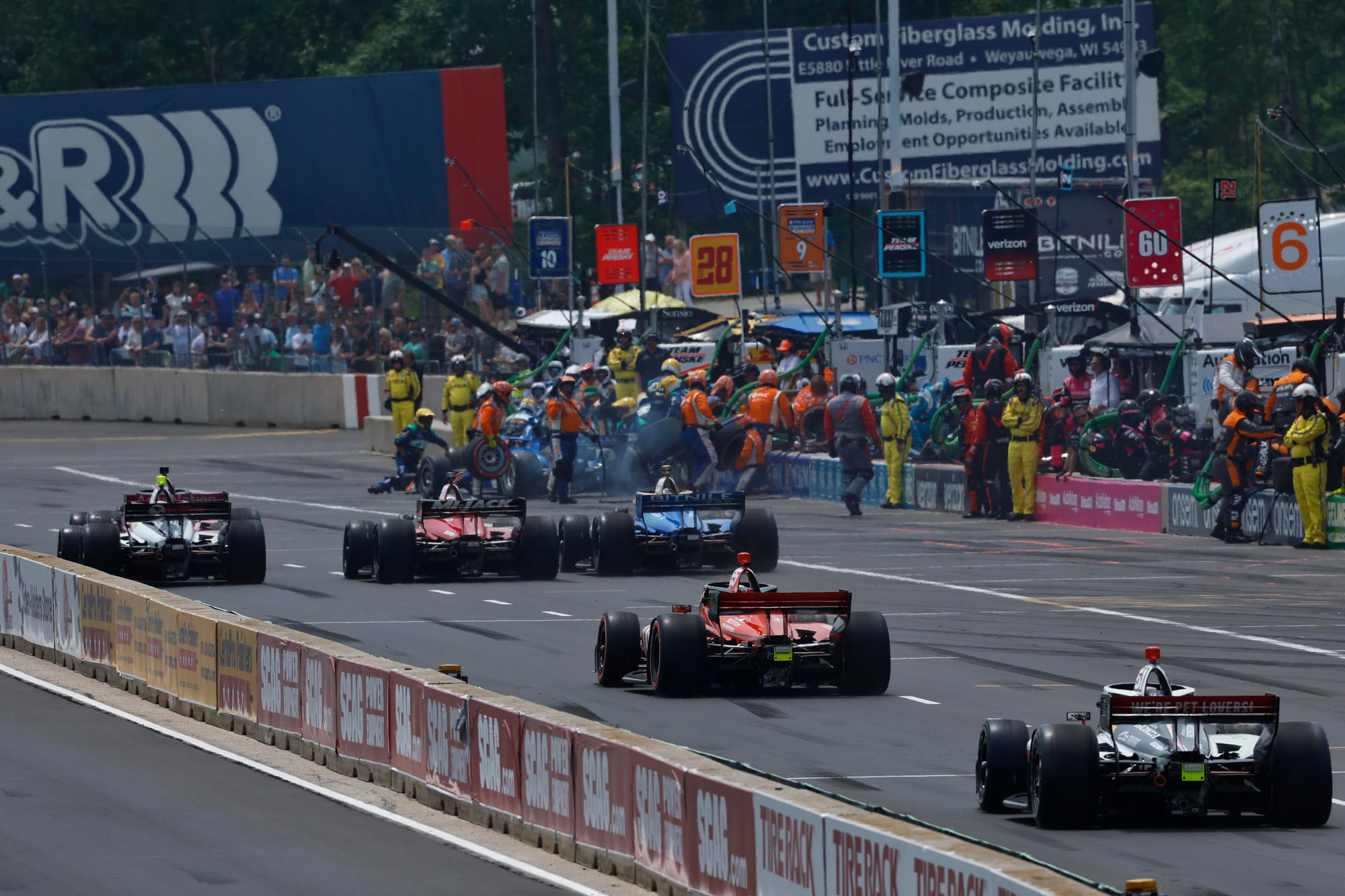
It’s here where motorsport has had a revolution in recent years and there are elements of that common to many championships. But not many series use the same pitstop format as IndyCar and have such a varied number of stops and varied race lengths.
There were a few one-stop races in 2023, but Christian Lundgaard’s Rahal Letterman Lanigan crew did eight stops in the Indianapolis 500. And that's refuelling as well as tyre changes each time - all conducted by a crew of just seven people (effectively one per wheel, one on the jack, one to clean the aeroscreen and the other on refuelling).
There’s also the fatigue element because IndyCar’s season is condensed into a shorter and more compact schedule than many other series, with the most important event, the Indy 500, taking place right in the middle over almost a month.
It will be no surprise to you that the best pit crews each year almost always come from Team Penske or Chip Ganassi Racing, so The Race spoke to a senior pit person from each team to get to the bottom of how pitstops have changed and the key elements to sustaining performance over a season, as Penske and Ganassi manage.
Tyler Rees (pictured below) is Scott Dixon’s crew chief, has been with the Ganassi organisation for almost 20 years, and also worked with the team’s Ford GT programme.
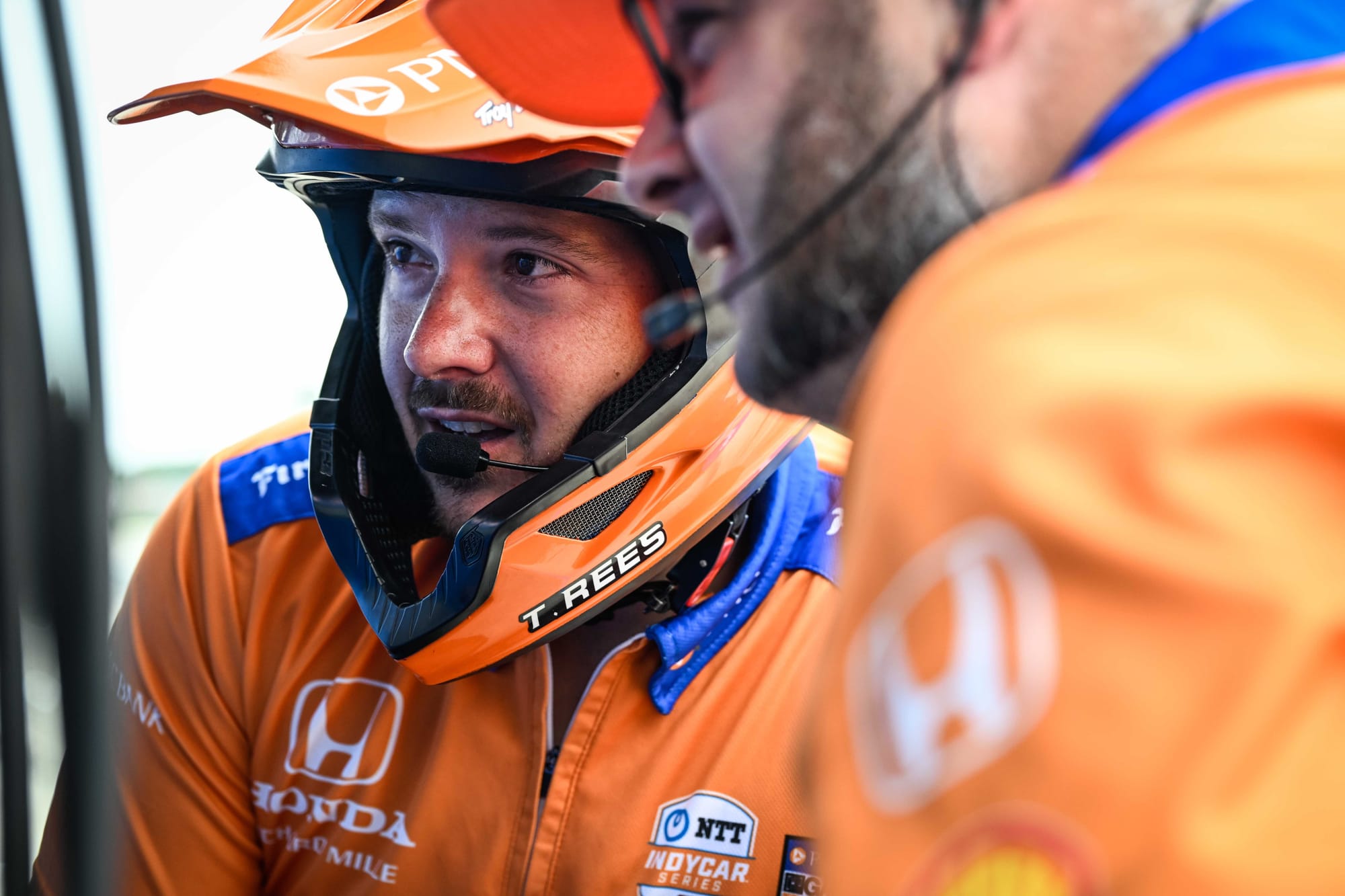
Shaun Rinaman is the son of Rick, widely regarded as one of the Indy 500’s best-ever mechanics, and has made a name for himself by winning the great event with the Penske team as part of his role training pit crews as athletic director.
Fellow US series NASCAR has usually led the way in how pit crews are developed and trained over the years. The big change in IndyCar recently has been the higher-ups in most teams being persuaded that it’s worth the investment in pit crews because when the competition is so close on track, they are making a bigger impact than ever.
Ask Rinaman and Rees about the biggest changes over the last five, 10, 20 years, and both reply that the resources that go into training are the key differentiator.
“When I took this job as the head coach of our IndyCar series pit crews it was a challenge because teams practiced when it was convenient and time allowed. That was how most teams operated,” Rinaman tells The Race.
“So, I wanted to get on more of a routine and practice more, get into the weight room more. have more time to go over film with the guys so they could understand and visually see what was going right or wrong.
“This took time, to convince the right people that this was the way we need to operate.
“Once I was given the blessing, it was simple. It came down to one thing: work... and train more and harder than everyone else!
“My guys do that, sometimes they don’t like it, but they do it and they love the reward.”
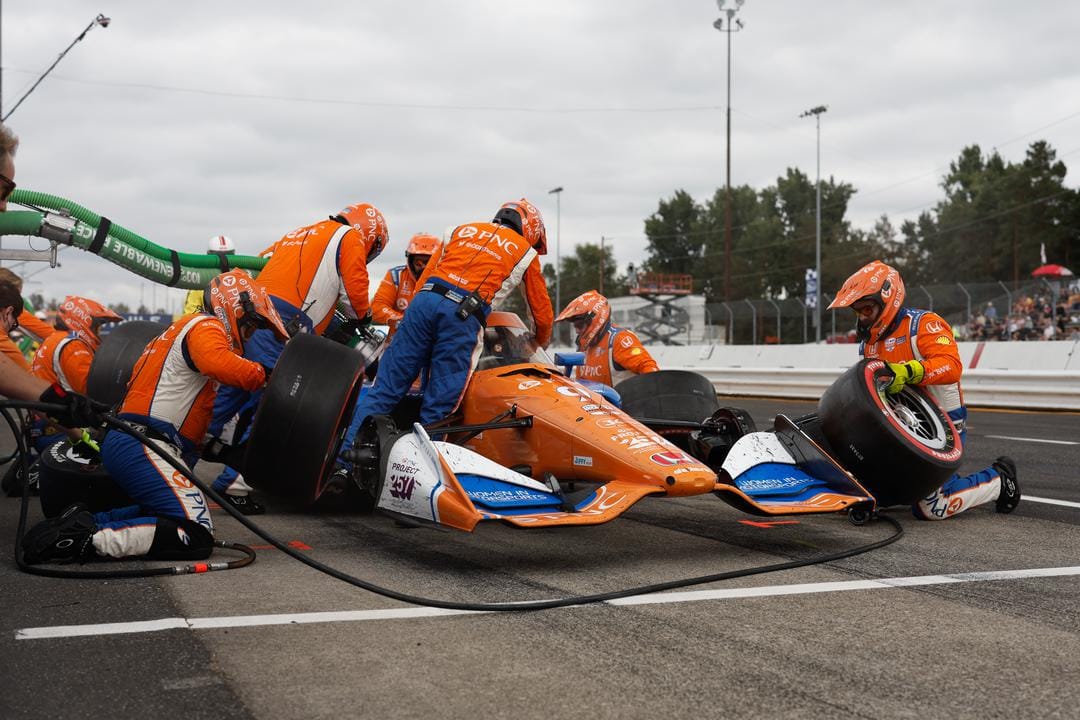
Rees adds: “Ten years ago, we had to practice on a stationary rig or one of the race cars that was intended to go the track for the next race.
“So, we used to only get in maybe one practice session before the cars got loaded to head to the next race.
“In the past 10 years we have built a car specifically for pitstops that can be driven into the practice pitstop bay at the shop to simulate a true pitstop.
“This car is available every day for pitstops. We have also put people in place in the last few years to be full-time pitstop coaches and do pitstop analysis after each race.
"It really has come a long way.”
Training is absolutely vital because you have to balance an intense off-season - that’s where the teams can get the thousands of repetitions in without the pressure of travel and a race calendar - with giving crews enough time to rest and recuperate after a tough racing season.
“I like to train our teams pretty hard during off-season with a Monday-through-Thursday routine,” says Rinaman.
“Typically weights and cardio and one day of practice at the beginning of the off-season, then we move into a 50/50 routine where we practice and do weights and cardio.
“Once we are closer to the start of the season, we practice [live pitstops] more than we do weights and conditioning. This is done with all the starting crews.
“Anyone who is a non-starter, or a developmental pit crew guy, will train mostly pitstops Monday through Thursday and have a lesser time in the weight room.”
Ganassi also looks to get at least one day of pitstop practice in before each race as part of its schedule.
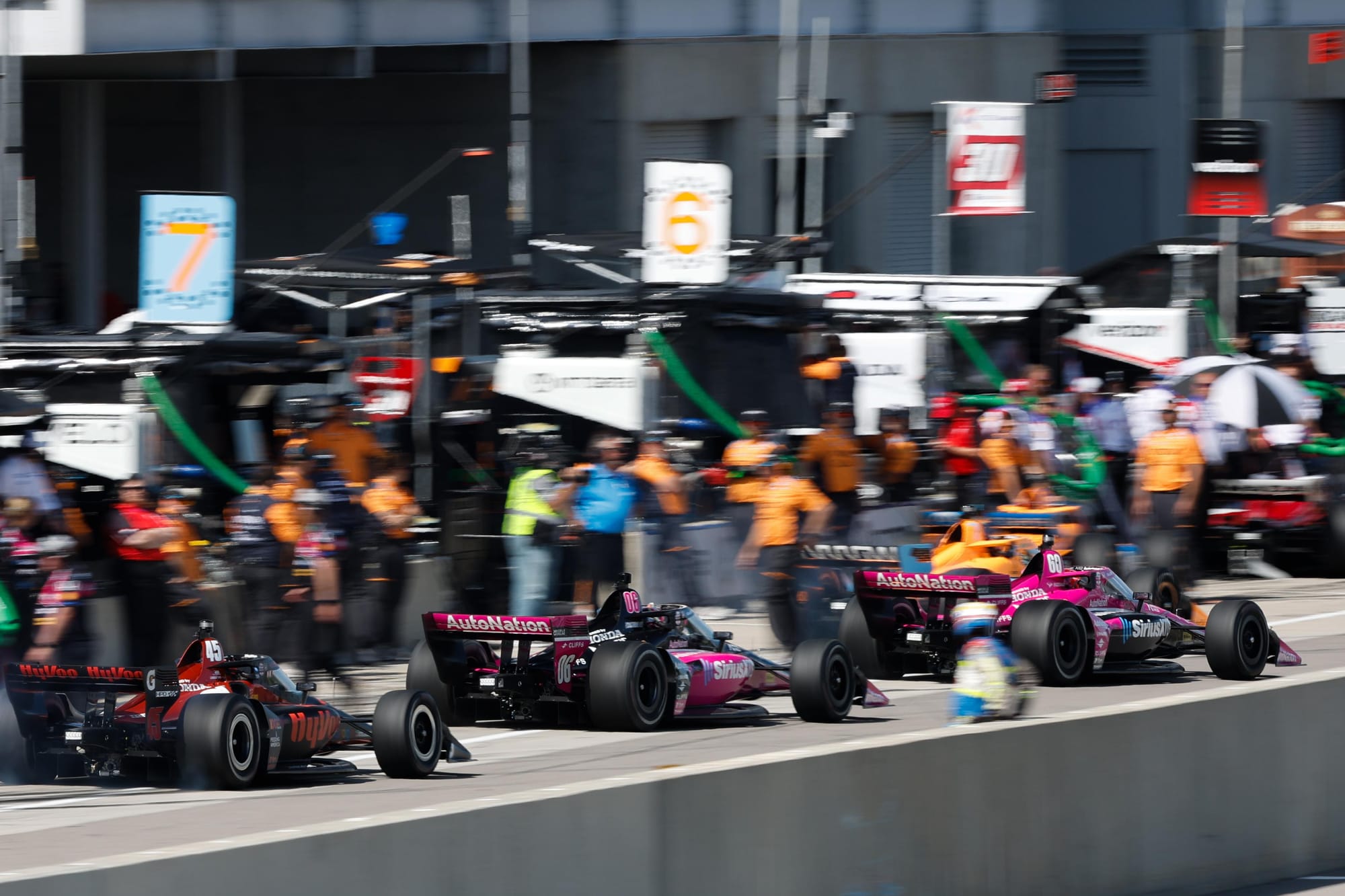
Perhaps one of the biggest changes we’ve not mentioned is that the big teams at least have the luxury of back-up personnel. Of course, you want your best crew on the car but, with so many double- and triple-headers plus the Indy 500, it’s a rough run and even the best people will need a break.
“While it is tough to have experienced pit crew guys ready to go at any moment, we do our best to try and have as many back-up personnel as possible,” Penske’s Rinaman adds.
“It seems every year we have some sort of injury, dehydration, personal issue, I have to address and manage as the season goes on.
“Indy is a tough one because the guys are there all month long and injuries occur, sickness occurs as well.”
The equipment the pit crews use is also an area where extra resources can make an enormous difference.
One facet in particular costs tens of thousands of dollars to buy, maintain and develop.
“The wheel guns have to be some of the best 'new' pieces of equipment,” Rees explains.
“They are always getting faster and more powerful. I think everyone is always working on how to make the stuff we have more efficient so it’s an ever-evolving thing with the nuts, hubs, air lines, regulators, etc.”
In a more holistic, zoomed-out sense, analytics and even just general video recording is a big part of the improvements in pitstops.
With better camera technology, the footage is better, which makes the extra analysis the new pit crew coaches are doing that bit more worthwhile.
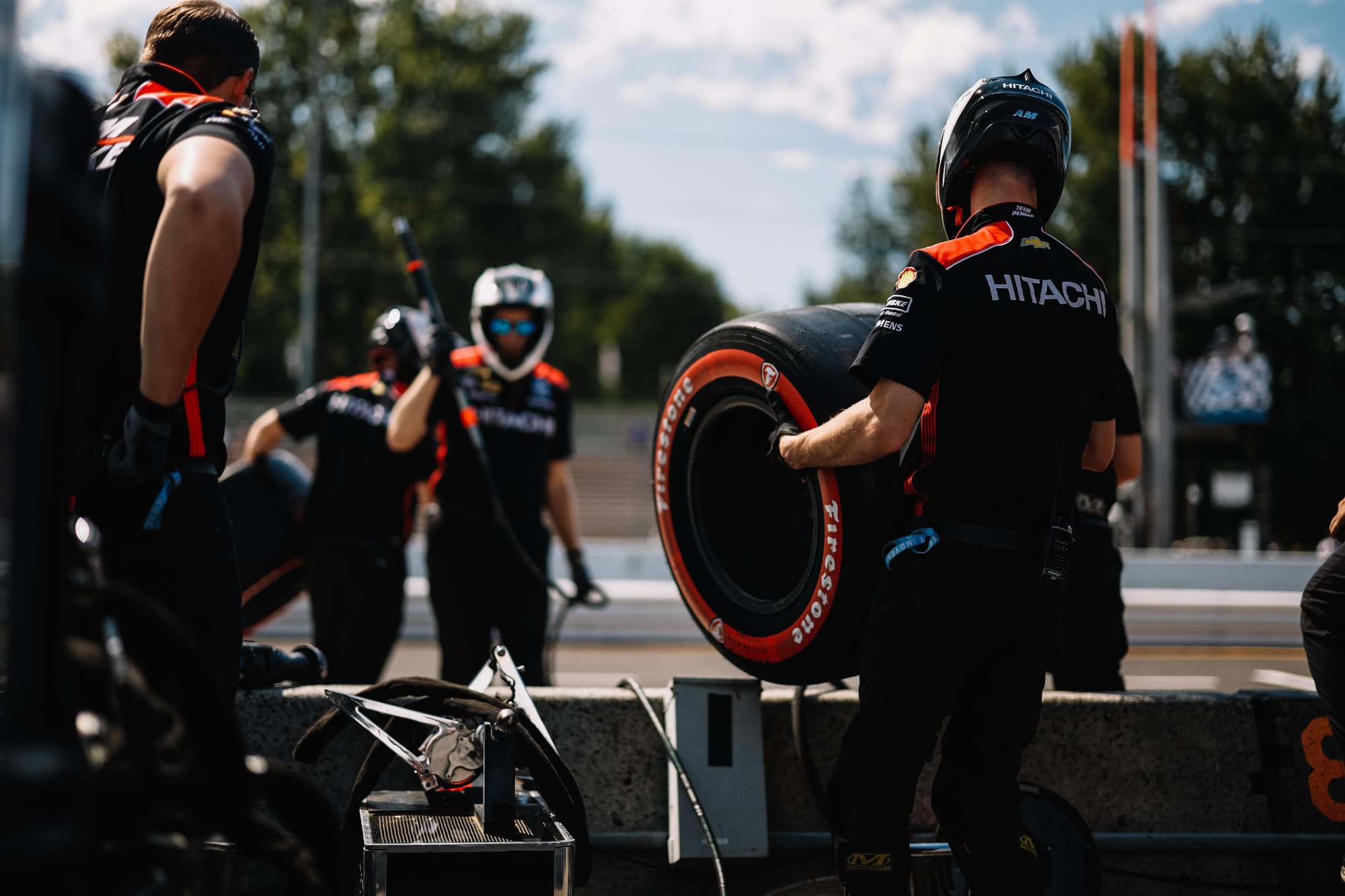
The development of sensors for the practice car in the factory and how that data is relayed is key because, instead of doing a day’s practice and then analysing mistakes and performance at the end of the day after hundreds of practice stops, the data is live. It’s instantly fed back so that people making errors can make instant corrections with the help of the coach in charge.
That means teams are getting a live look at how their crews are performing - helpful for deciding your ‘first team’ and how you rotate personnel - and there can even be a bit of healthy competition between team members.
Even 10 years ago it would be wild to think you could live-analyse pitstops with sensors on a practice rig to establish best practice before any in-depth video reviews have even taken place.
IndyCar teams' dedication to inserting pit crew coaches, dedicating more time to practice and analysis, and investing in technology and more crew members is paying dividends, at least for the leading outfits.
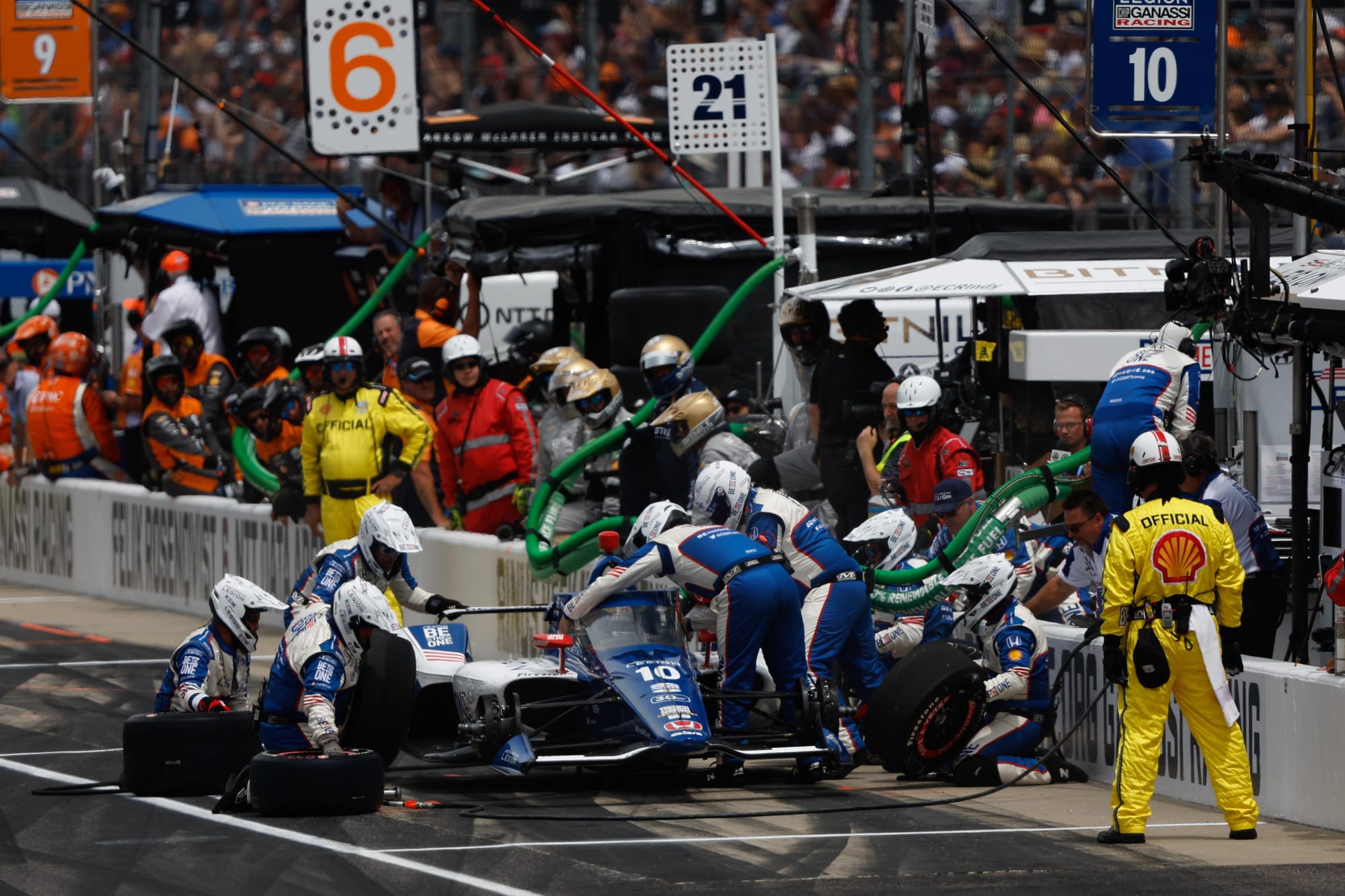
Lower down the pyramid, there’s a shortage of money to spend on all of these things and a shortage of good pitstop personnel because there’s only so many to go around and the top teams pay best! It’s the same story with mechanics and engineers.
That explains why Ganassi and Penske are consistently top of the table, and why the other teams are taking more time to catch up.


